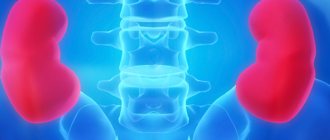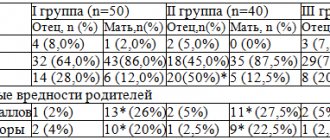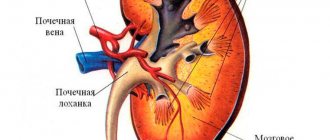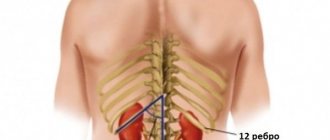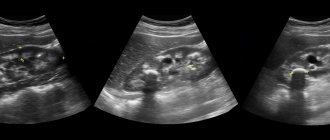Diet food
Therapeutic measures are complemented by diet. The patient must eliminate certain foods from his diet. Namely:
- Smoked, salty, fatty, spicy foods.
- Spicy seasonings.
- Alcohol.
- Those products that do not contain natural dyes.
The food consumed should be sufficiently high in calories and contain vitamins. There should not be a large amount of protein present. Dietary nutrition is developed individually, taking into account the functional abilities of the kidneys. It is necessary to monitor and adjust the patient’s regimen throughout his life.
On March 5, 1970, on the initiative of the outstanding pediatrician, academician of the Russian Academy of Medical Sciences, Professor Yuri Evgenievich Veltishchev, the Department of Nephrology was created at the Moscow Research Institute of Pediatrics and Pediatric Surgery of the Ministry of Health of the Russian Federation, which from its founding until 2006 was headed by Professor Maya Sergeevna Ignatova, then by Professor Vladimir Viktorovich Dlin.
| Prof. V.V. Dlin |
In 1972, the first nephrobiopsy was performed in the nephrology department using light and electron microscopy and immunohistochemistry. In 1974, the VDNKh gold medal for the development of the “Step-by-stage treatment of children with kidney diseases” system. In 1978, for the first time in the USSR, the monograph “Congenital and hereditary kidney diseases in children” was published, ed. M.S. Ignatova and Yu.E. Veltishcheva. In 1983, on the basis of the nephrology department, the first Republican Center for Pediatric Nephrology and a one-day hospital were created as a new form of clinical work. In 1997, on the initiative of prof. A.V. Papayan, the Russian Society of Pediatric Nephrologists “Creative Association of Children's Nephrologists” was created, uniting more than 450 pediatric nephrologists from various regions of Russia, Belarus, Ukraine, Moldova, Kazakhstan, and Uzbekistan.
The main GOAL of the department’s work is to increase the efficiency of diagnosis and treatment of diseases of the urinary system and reduce the incidence of disability in children.
Throughout all the years of its existence, the department has developed and continues to study problems relevant to pediatric nephrology:
- Epidemiology of nephropathies.
- Organization of nephrology service in the country.
- The role of heredity in the development of nephropathies. Genophenotypic correlations (Alport syndrome, kidney cysts, etc.)
- Environmental influences on the functional and morphological state of the kidneys.
- Clinical and morphological features of glomerulonephritis.
- Characteristics of nephropathies that develop with instability of cell membranes.
- The influence of viral infections on the occurrence and/or progression of nephropathies.
- Kidney dysembryogenesis, developmental anomalies and hereditary nephropathies (hereditary nephritis, polycystic kidney disease, nephronophthisis, Denis-Drash and Fraser syndromes, etc.).
- Metabolic nephropathies.
- Features of the treatment of nephropathies as pharmacotherapy develops. Progression of nephropathies and possibilities of nephroprotection.
- Introduction of new concepts into the practice of a pediatric nephrologist: chronic kidney disease (CKD) and acute renal parenchymal damage (AKI).
- Early detection of renal failure and intensification of work with specialists in replacement therapy and kidney transplantation.
Currently, the clinic has more than 40 years of experience in treating children with various hereditary and acquired pathologies of the urinary system. On the initiative of TODN https://kidney.org.ru: 10 Russian congresses on pediatric nephrology were held:
- Moscow,
- Saint Petersburg,
- Voronezh,
- Rostov-on-Don.
6 International Schools of Pediatric Nephrology have been organized under the auspices of the European Society of Pediatric Nephrologists (ESPN) and the International Association of Pediatric Nephrologists (IPNA):
- Orenburg (1997, 2010),
- Voronezh (1998),
- Vladivostok (2001),
- St. Petersburg (2002),
- Moscow 2013).
Since 1999, together with the Russian Dialysis Society, the journal “Nephrology and Dialysis” www.nephro.ru has been published, addressed to both clinical practitioners and research specialists in the field of nephrology. The journal publishes reviews and lectures on a wide range of issues in nephrology and dialysis, original articles, short communications and notes from practice, as well as information about planned and past conferences, symposia and congresses. Impact factor RSCI 2013 0.734 Journal on the website of the scientific electronic library. elibrary.ru
How is the disease diagnosed?
To diagnose hereditary nephritis, the patient is prescribed a thorough genealogical study. In approximately 85% of all cases, a family history of urological pathology and hereditary poor hearing and vision are detected.
If it is assumed that the disease is associated with a genetic abnormality, research methods are used that can help identify damage to the basement membrane and impaired renal function. In addition, thanks to such methods it is possible to identify morphological changes in the parenchyma, which is characteristic of the hereditary form of nephritis.
These methods include:
- Taking a general urine test. The patient gives two urine samples. They are collected at different times. Based on the results of this analysis, changes in red blood cells can be determined. Proteinuria, leukocyturia, and cylindruria are also detected, which increase with the development of the disease.
- Carrying out a puncture biopsy of the kidneys. Histological examination of the biomaterial taken from the kidney helps to identify red blood cells. Also, compaction of the glomeruli and infiltration of interstitial tissue are determined. Immunofluorescence analysis will reveal the presence of atypical type 4 collagen.
- Carrying out electron microscopy. The initial stage of hereditary nephritis is characterized by thinned glomerular basement membranes. A later stage is manifested by their thinning or thickening. The membranes acquire a layered, split character.
A technique that can be used to identify a mutated gene is used in rare cases. This is technically difficult and expensive. The fact that renal failure is developing is indicated by the presence of changes in the biochemical blood test. That is, creatinine, uric acid, urea nitrogen increase, and total protein decreases. The urine test indicators also change - the kidney test will be positive.
Hereditary nephritis must be differentiated from renal tuberculosis, acute and chronic glomerulonephritis, pyelonephritis, urolithiasis, gouty interstitial nephritis. The patient is examined not only by a nephrologist and urologist, but also by an otorhinolaryngologist, ophthalmologist, therapist, endocrinologist, rheumatologist, immunologist, and oncologist.
